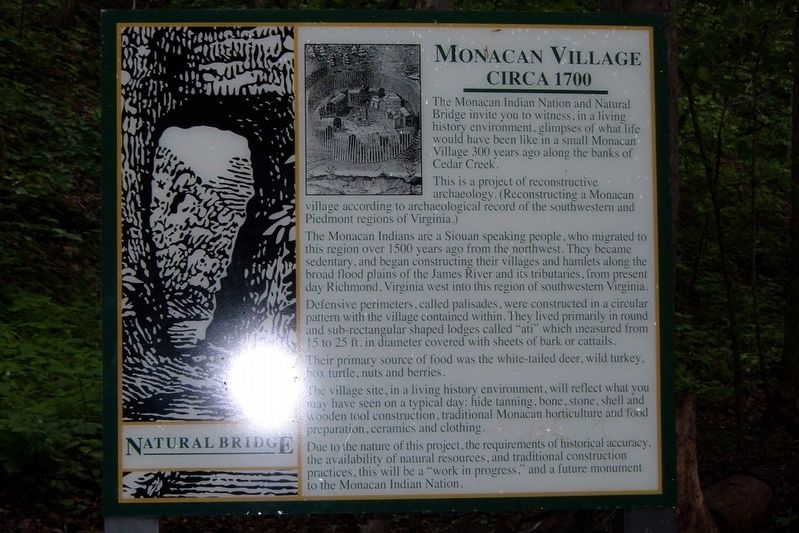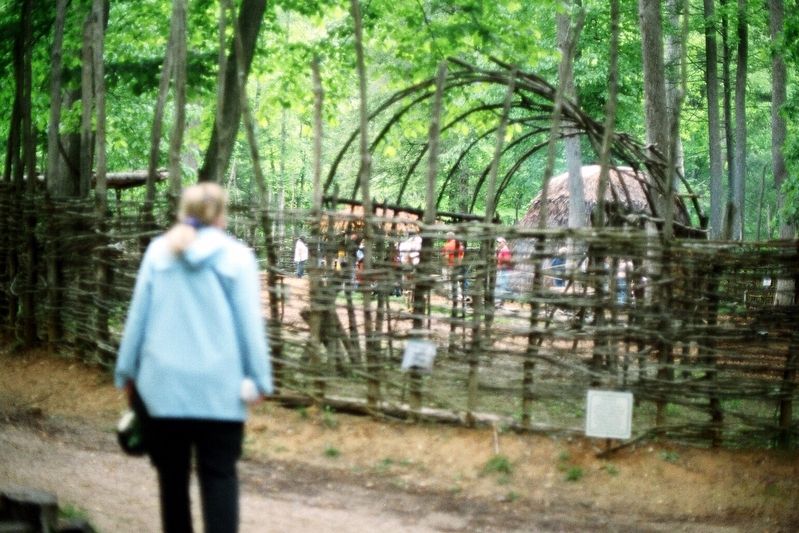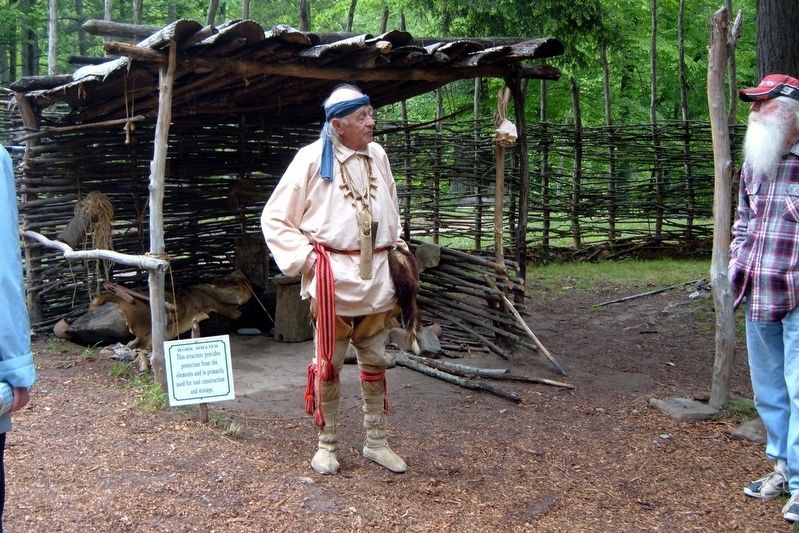Natural Bridge in Rockbridge County, Virginia — The American South (Mid-Atlantic)
Monacan Village
circa 1700
This is a project of reconstructive archelogy. (Reconstructing a Monacan village according to archeological record of the southwestern and Piedmont regions of Virginia.)
The Monacan Indians are a Soiuan speaking people, who migrated to this region over 1500 years ago from the northwest. They became sedentary, and began constructing their villages and hamlets along the broad flood plains of the James River and its tributaries, from present day Richmond, Virginia west into this region of southwestern Virginia.
Defensive perimeters, called palisades, were constructed in a circular pattern with the village contained within. They lived primarily in round and sub-rectangular shaped loges called “ati” which measured from 15 to 25 ft. in diameter covered with sheets of bark or cattails.
Their primary source of food was the white-tailed deer, wild turkey, box turtle, nuts, and berries.
The village site, in a living history environment, will reflect what you may have seen on a typical day: hide tanning, bone, stone, shell and wooden tool construction, traditional Monacan horticulture and food preparation, ceramics and clothing.
Due to the nature of this project, the requirement of historical accuracy, the availability of natural resources, and tradition construction practices, this will be a “work in progress”, and a future monument to the Monacan Indian Nation.
Topics. This historical marker is listed in this topic list: Native Americans. A significant historical year for this entry is 1700.
Location. 37° 37.85′ N, 79° 32.85′ W. Marker is in Natural Bridge, Virginia, in Rockbridge County. Marker can be reached from the intersection of South Lee Highway (U.S. 11) and Wert Faulkner Highway (Virginia Route 130), on the left when traveling south. The marker is on the Cedar Creek Trail. Touch for map. Marker is at or near this postal address: 6477 S Lee Hwy, Natural Bridge VA 24578, United States of America. Touch for directions.
Other nearby markers. At least 8 other markers are within walking distance of this marker. “The Most Sublime of Nature’s Works” (within shouting distance of this marker); Saltpetre Cave (about 500 feet away, measured in a direct line); A Cave that Armed American Soldiers (about 700 feet away); Lost River (about 700 feet away); George Washington (approx. 0.2 miles away); Natural Bridge (approx. ¼ mile away); a different marker also named Natural Bridge (approx. ¼ mile away); Lost and Found (approx. ¼ mile away). Touch for a list and map of all markers in Natural Bridge.
Also see . . . Monacan Indian Nation. Wikipedia Entry. (Submitted on April 15, 2020, by Larry Gertner of New York, New York.)
Credits. This page was last revised on April 15, 2020. It was originally submitted on July 19, 2017, by Larry Gertner of New York, New York. This page has been viewed 669 times since then and 59 times this year. Photos: 1, 2, 3. submitted on July 19, 2017, by Larry Gertner of New York, New York. • Bernard Fisher was the editor who published this page.


